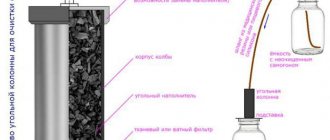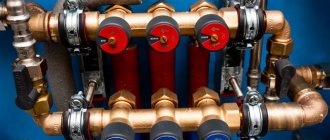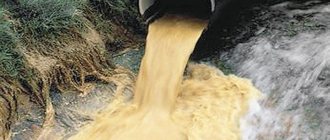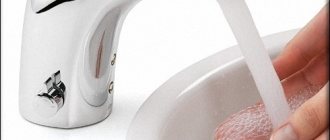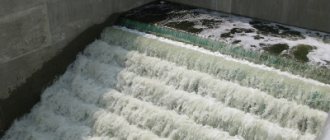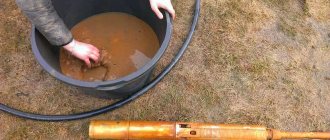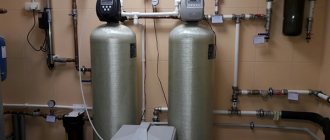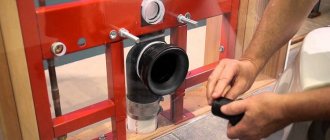A well is one of the most affordable ways to supply water to a suburban area. It provides life-giving moisture for the natural needs of households, their household needs and watering plants on the site. Therefore, the water in it must be free of all kinds of impurities. Contaminants must be removed immediately. Do you agree?
From the article we have proposed, you will learn what stages are involved in purifying water from a well, and also whether it can be done on your own. We will tell you by what signs water pollution is determined. We will present in detail effective ways to eliminate mineral and organic inclusions.
How to determine the quality of well water
The ideal option is to submit the water for laboratory analysis, which will reveal its transparency, contamination with bacteria, the presence of salts, metals and other troubles. But the easiest way to determine whether water is suitable for drinking and household use is to pour it into a transparent container and see what happens to it after a couple of hours. If the transparency has not become higher, if a thick layer of sediment has formed at the bottom of the dish, if the water itself emits unpleasant odors, then you should not use it.
Of course, it is necessary to inspect the well for its integrity. Typically, cloudy water appears only if soil gets into it. Therefore, it is necessary to call repairmen who will seal the seams between the elements of the well shaft and replace the bottom filter, consisting of crushed stone.
If the color of the water is opaque, then disinfection is required. And also erect a canopy over the hydraulic structure, which will protect the well from debris, precipitation and sunlight. By the way, it is the sun that contributes to the “blooming” of water.
Muddy and clear water Source vodatyt.ru
If the water from a well is brown or yellow, then this is a sign that it contains a lot of iron salts. But here no methods other than filtering will help.
That is, it turns out that building a well is, although not an easy task, requiring certain financial investments, but it is a one-time thing. It is more difficult to organize water purification. And these are the same financial investments, only constant ones, because filtration requires constant monitoring of the cleaning efficiency. And this can only be achieved by replacing the filter elements.
But experts assure that the purity of water from a well largely depends on the technical condition of the hydraulic structure itself. Therefore, it must be repaired at least once every five years, because colonies of bacteria, which are mucus, form on the walls, the sealing of the seams between the shaft elements decreases, and the bottom filter decreases in thickness. Therefore, water is pumped out from the well, the mucus is scraped off mechanically, after which the walls of the shaft are treated with disinfectant compounds, joints are repaired, and the bottom filter is changed or supplemented.
Well cleaning and repair Source sense-life.com
In what sequence to install a bottom filter for water from a well?
A bottom filter for a well is a layer-by-layer embankment made of natural materials that have filtering properties and are not washed away by well water. Passing through such an embankment, the liquid is cleared of debris and suspension, and some of the dangerous impurities.
The materials used to construct the bottom filter must have standard characteristics: do not float in water, do not support rotting, do not enter into chemical reactions, and be environmentally friendly.
It is possible to manufacture a bottom filter either from one material or from a combination of 3 bulk materials of different fractions. In this case, both direct filling is allowed, when a large fraction is placed on the bottom and a layer of the smallest material is poured on top, as well as reverse filling.
Materials for the bottom filter of a well.
Mechanical cleaning of well walls
Falling into the well, leaves or accidentally fallen objects activate decomposition processes in the water. Another reason for clogging a well is its irregular use, which causes the tank to silt up.
To begin mechanical cleaning, all liquid must be pumped out of the well. After this, a ladder is lowered to the bottom of the tank, along which a person with a scraper, a metal brush and a sponge descends. With these tools, he must clean the walls and bottom of the well from accumulated dirt and mucus.
You can also use an automated method to clean the tank. To do this, use a drainage pump, which, due to the jet created, lifts silt from the bottom of the well and its walls and purifies the water by passing it through itself. If the well is used all year round, experts recommend mechanical cleaning every 5-7 years.
Bottom filter
The material for the bottom filter can be quartz sand. It’s easy to find it on your own on the banks of a river or lake. This sand has a light yellow color and a fraction size of about 1 mm. Before filling the material, it must be thoroughly washed to rid the future filter element of clay and organic impurities.
Another available well filter material is river pebbles. Before getting into the well, it needs to be pre-washed or calcined in a furnace.
Gravel with a fraction of up to 20 mm can be used as a bottom filter. It, like pebbles, must be thoroughly washed, since the cavities inside the gravel can be filled with particles of clay, peat, silt or other harmful impurities.
Scheme of a bottom filter for a well.
Jadeite can serve as a bottom filter. This natural stone contains silver impurities, so it not only filters, but also purifies the water in the well.
Well disinfection
For various reasons, a well in a country house may require complete disinfection. They resort to it when:
- the well was flooded during a flood;
- household wastewater, agricultural fertilizers or industrial chemicals got into the tank;
- There were corpses of animals or birds in the water.
Before disinfection, it is necessary to pump out all liquid from the reservoir. If the water level is high and the well flows well, this will require a powerful pump. After pumping out the liquid, a protective frame is installed. To do this, carefully seal any cracks or chips at the joints of the concrete rings.
The next stage is the mechanical removal of dirt and plaque from the surfaces inside the tank. All material that was used as a bottom filter is also removed and new material is added.
The walls of the well, the superstructure and the lid of the tank are treated with bleach. Chlorine, manganese, or special dosing cartridges sold in stores can be used to disinfect water.
Autonomous water supply diagram
Before moving on to the topic of which water filter to choose for a summer house from a well, it is necessary to explain what an autonomous water supply network is. It consists of:
- a pump with which water is supplied from the well to the house ;
- piping;
- filter systems for water purification;
- sometimes a tank in which water is collected for storage .
In such a water supply system, two types of pumping equipment are used.
Superficial
They got their name only because they are installed on the surface of the well, without being lowered into the water. A hose or plastic pipe equipped with a mesh filter is lowered into the shaft. The latter is designed to hold large undissolved particles: pebbles, organic matter, garbage, sand, etc.
Surface pump for drawing water from a well Source eka-proffiks.ru
Since the water supply system is a system with constant off-season operation, it is necessary to create all the conditions for the pump to be located in an insulated space. There are several options for this:
- inside the well , where a platform is built from metal profiles , on which the pump is installed;
- carry out the installation of a caisson , inside which a pump , part of the piping and locking fittings are mounted;
- an insulated building is erected next to the hydraulic structure , which can be used additionally for domestic needs;
- install the pump inside the house : either in a specially designated utility room , or in the basement .
Scheme of an autonomous water supply system with installation of a surface pump in the basement of a house Source www.bigam.ru
Submersible
From the name it becomes clear that this modification of water pumps is partially or completely immersed in water. That is, it is located inside the well, and a pipe is already led from the device itself directly into the house. The design of the submersible pump already includes a strainer located on the suction pipe of the unit.
These are small pumps, compact, but with a sufficiently large power that can provide water to a small country house. As for the pressure, these devices cannot boast of a large indicator. That's why they are used to pump water from shallow depths (up to 10 m), which wells have.
Installing a submersible pump in a well Source stroyportal.ru
See also: Catalog of companies that specialize in water supply and sewerage.
What is it needed for?
Often, the depth of wells does not exceed 20 m, so the risk of nitrates, pesticides and other harmful substances from the upper layers entering the water increases.
To avoid the entry of surface pollutants into the source, the well should be constructed at a depth of 100 m. Otherwise, it is imperative that the well be regularly cleaned and high-quality filters installed.
Their main function is the elimination of harmful impurities in water. Important! When independently assessing the condition of water, you should pay attention to color, transparency, and smell.
If at least one of the factors is in doubt, then it is necessary to send the water to a laboratory for analysis in order to obtain a reliable assessment of the contents of the source.
But
it is important to understand that the composition changes during the season . Therefore, you will have to send it regularly. It is much easier to purchase and install a filter.
The result of constant use of filtered water will be:
- Preserving and maintaining the health of residents;
- Extending the service life of household appliances (washing machine, dishwasher, boiler, faucets);
- Preventing the development of various diseases.
Filtration system
In this article we will not talk about the simplest water filters, which include jugs and special attachments. With their help, you can purify only slightly contaminated water that enters the house from the central water supply network. Our task is to talk about those devices that fight heavy pollution.
Coarse filter
Essentially, this is the same mesh device, only it is more advanced. That is, the mesh (metal or synthetic) is enclosed in a housing, which is cut into the piping after the pump. The main task of this type of filter is to purify water from large impurities. The particle size is determined by the size of the mesh cells.
It is this filter that retains sand, clay, small pebbles, pieces of caked lime, scale and other impurities. Most often it is made of stainless steel, in which holes are made with sizes ranging from 50 to 400 microns. The smaller the holes, the more efficiently the device works, that is, it purifies the water cleaner. Such devices have practically no limitation on their service life. They are reliable and rarely require repairs.
Coarse mesh filter Source neptun163.ru
In this regard, filter devices with polymer cartridges (usually propylene) are reliable units, but they quickly become clogged with dirt. Therefore, this group of filters is made with removable filter elements. After contamination, they are simply washed with water or replaced with new ones.
Manufacturers today offer coarse filters of different designs:
- with coupling or flange connection;
- straight or inclined;
- with or without flushing.
Obliques differ from straight ones in that the mesh element in the form of a cylinder is installed at an angle to the water flow in the former, and perpendicular to the latter. At the same time, in the design of the device there is a reservoir, which is where the mesh cylinder is installed, which additionally performs the functions of a sludge collector. That is, large particles that did not pass through the mesh settle to its bottom, and small particles of dirt settle on the latter.
Cartridge-type coarse filter with flushing Source m.yukle.mobi
Among all the known coarse filters, there are both washable and non-washable types. But cartridge models are mostly non-flushable. How do they differ from each other? Non-flushing devices are devices whose filter elements are tightly sealed into the filter housing. That is, you won’t be able to pull them out and wash them. On the contrary, flushing ones can be easily disassembled, the mesh is washed and installed in place for further use. Let us add that flushing models can only be installed on horizontal sections of pipework.
DIY filter for purifying water from a well
To make a water filter with your own hands, you can use various components, from river sand to activated carbon tablets. However, their efficiency will be lower than their industrially produced counterparts. You can make a bottom filter for a well yourself. Materials for it can be found in nature; the installation method of such a filter also does not require special skills.
The standard option is a three-layer filter with a straight design. Material of a large fraction is placed on the bottom, the middle layer is formed from material several times smaller in diameter, and quartz sand or small river pebbles are placed on top. The thickness of each layer is about 20 cm. Thus, the entire filter structure will take 60 cm from the height of the well shaft.
Video description
In the video, a specialist talks about the fine filter:
Main filters
The group of pre-cleaning filters includes devices called main ones. They got their name only because they cut into the main pipe of an autonomous water supply system. This is a flask-shaped device, the body of which is made of steel or plastic. The device itself is collapsible, because a filter element is installed inside the flask.
The most important thing is that main filters easily purify water that flows through pipes at a decent speed - 20-50 l/min. At the same time, they retain not only impurities, but also chlorine, which gives the water a pleasant taste.
There are a huge variety of filters of this type on the market:
- by degree of purification;
- according to the power of water flow;
- by type of case and cartridge;
- according to the level of hydraulic losses;
- by the temperature of the liquid that flows inside the device.
The last position is important because there are filters for cold water and for hot water. The former can be used as a water filter for a garden from a well. But the latter cannot be installed with the hot water supply system at home.
Main filters in an autonomous water supply system Source blog-potolok.ru
Types of main filters
A main filter will help solve the problem of cleaning well water. It is installed on pipes and becomes an element of the plumbing system. Such flow filters are produced separately for cold and hot water.
The main installation removes insoluble impurities of iron, calcium, magnesium, and organic compounds from water. Such filters may include several stages of cleaning. Single-stage models guarantee a minimum amount of impurity removal. When installing them, you should take into account the need to frequently replace cartridges.
Two-stage main filters first perform mechanical and then sorption purification of the liquid. Three-stage models, in addition to the listed functions, remove iron impurities and soften water.
Video description
The video shows water filters as a cheap and reliable option for purifying water from iron:
Reverse Osmosis Filtration System
This is the most modern approach to filtering water from wells. Moreover, it is the most effective because it cleans by 99%. Other filters cannot boast of such indicators. In the device itself, the water goes through several degrees of purification, and the output appears as a liquid whose performance is not inferior to drinking water produced by the best manufacturers.
So, a reverse osmosis system consists of:
- preliminary water purification , where small impurities and chlorine are removed, the process itself is three-stage and is carried out in three flasks installed in series;
- Membrane-type filtration is a perforated membrane in which holes with a diameter of 0.0001 microns are made over the entire area.
The main element is the membrane. It works on an interesting principle. Water is supplied under pressure and passes through the holes into the next compartment in the form of molecules. But all known impurities cannot pass through such small holes. This is how cleaning happens. But the reverse osmosis system has one serious requirement - the filter will only work if water is supplied to the membrane under a pressure of at least 1 atm. If this is not followed, liquid will not be able to pass through the holes. But since an autonomous water supply network is primarily a pump, the water pressure inside the system can be guaranteed.
Reverse osmosis filter Source stroy-podskazka.ru
As for the three-stage pre-cleaning, the first flask is a pre-filter that allows undissolved impurities no larger than 5 microns to pass through. The second flask is a device filled with activated carbon, with which organics and chlorine are retained. And the third flask is a fine filter that retains undissolved particles with a diameter of no more than 1 micron.
A reverse osmosis filter is a rather bulky product that is usually installed in a cabinet under the sink. Today, manufacturers, trying to increase the quality of drinking water, complete the filter with a so-called mineralizer, which is filled with tourmaline balls. This mineral saturates water with sodium, magnesium and calcium.
Why and from what to filter water at the dacha
The water that accumulates in the well is not always suitable for human consumption or domestic use. Even if a dacha or country house is located far from the city, the groundwater sources feeding the well can be contaminated with industrial or organic waste or agricultural fertilizers.
The presence of impurities can be visually determined by the presence of sediment, which appears when the liquid settles for a long time. However, it may also contain impurities that are not visible to the human eye, but are extremely dangerous to health.
Today there are no completely pure groundwater layers: soil and rocks purify underground moisture only from mechanical impurities and some chemical elements, but are not able to rid it of bacteria, microorganisms, and nitrogen-containing substances. As laboratory tests of liquid from a well or borehole show, such water may contain:
- pathogens of various origins;
- impurities that increase water hardness;
- nitrogen compounds and hydrogen sulfide;
- toxic substances;
- salts of heavy metals.
Physical methods of disinfection
These methods include cleaning using ultrasound and ultraviolet light. These methods are efficient and environmentally safe. The main disadvantage is the need to purchase expensive devices. It is rational to use such equipment if the well is connected to an autonomous water supply system and is used year-round.
The cleaning device is equipped with an automatic system that regulates the water supply through a special unit. This emits ultraviolet light, which is harmful to bacteria. At the same time, the smell and color do not change. However, such a device is not used if there is no cover at the well. The equipment that influences mold with ultrasonic waves operates in almost the same way.
Measures to prevent source pollution
In order to avoid frequent cleaning of the well from bacteria, it is necessary to take some measures in a timely manner:
- It is not recommended to leave the well open, as the chance of various debris getting inside increases;
- penetration of direct sunlight into the mine is unacceptable, this creates a favorable environment for the growth of bacteria;
- the mine should be as far as possible from places of contamination, the minimum distance to the sewerage system should be 20 m;
- the walls of the shaft must be sealed, this will protect it from surface and groundwater getting inside;
- carefully approach the selection and location of pumping devices; they should not lift soil particles from the bottom;
- avoid draining the extracted water back into the mine, this will contribute to the contamination of its contents;
- regularly monitor the quality of water, at the first suspicion of its deterioration, contact specialists;
- carry out timely maintenance of the well shaft and pumping equipment;
- special attention should be paid to the bottom of the shaft;
- It is important to decide whether you need to install a filter and which one, in some cases it can worsen the quality of water.
Compliance with these rules will significantly ensure the quality of the produced water and will allow you to clean the well less frequently. At the slightest violation of water quality, it must be taken to the SES for analysis, the health and life expectancy of your family members will depend on this.
A wide range of
Domestic manufacturers of filtration equipment offer attractive prices for their products
This allows you to find a budget option for your dacha.
In terms of price-quality ratio, the following brands have gained popularity:
- "Barrier" - the company primarily produces faucet attachments and filter jugs
- “Aquaphor” – the range is wider, it includes flow-through water purifiers “under the sink”, in-line filters
- "Geyser" - a wide selection of ready-made complexes, as well as individual devices and replaceable cartridges, thanks to which it is possible to install a filter system for specific requests
Imported products are practically no different in quality from those of leading Russian companies, but at the same time they are noticeably more expensive.
Safety when cleaning a well
This type of work is classified as risky, so cleaning the well must be carried out taking into account the necessary safety measures.
- Cleaning activities must be carried out using a safety rope. If a person descends into the well, then a group of two or three assistants should observe this.
The use of a safety rope is mandatory
- The head is protected with a special helmet, and the legs are protected with high rubber boots.
- If, when diving more than 3 meters, it becomes difficult to breathe, dizziness and signs of drowsiness occur, then you should immediately climb up.
- Disinfection and cleaning of the bottom must be carried out using a respirator. It is also acceptable to use a gas mask.
Cleaning the bottom of the well
- Such work is contraindicated for persons with heart or respiratory diseases.
- When you are at the bottom of a well, you must not stand under a rising or falling bucket.
